Unit 1 Science and Scientists Learning About Language课件(共32张PPT) -人教版(2019)选择性必修第二册
文档属性
| 名称 | Unit 1 Science and Scientists Learning About Language课件(共32张PPT) -人教版(2019)选择性必修第二册 | 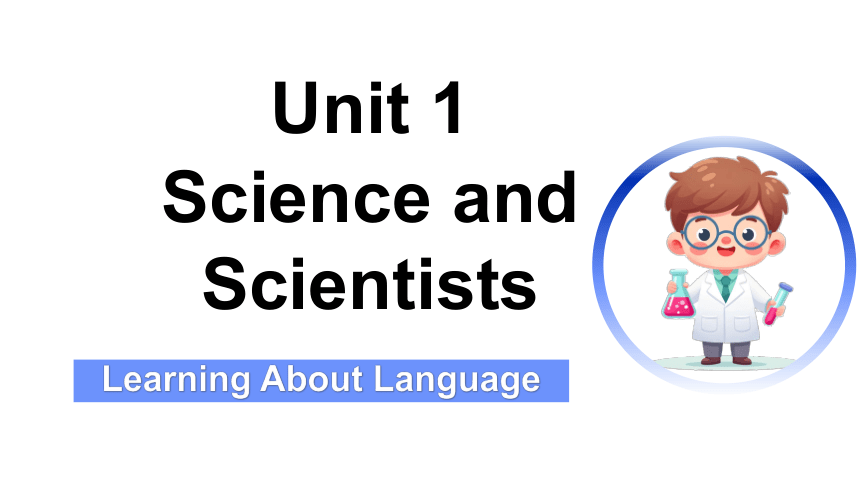 | |
| 格式 | pptx | ||
| 文件大小 | 3.6MB | ||
| 资源类型 | 教案 | ||
| 版本资源 | 人教版(2019) | ||
| 科目 | 英语 | ||
| 更新时间 | 2025-07-28 17:26:12 | ||
图片预览

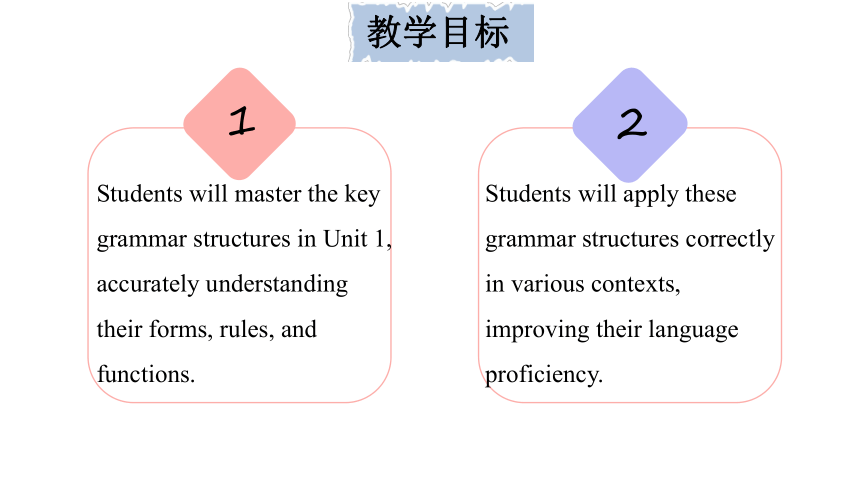
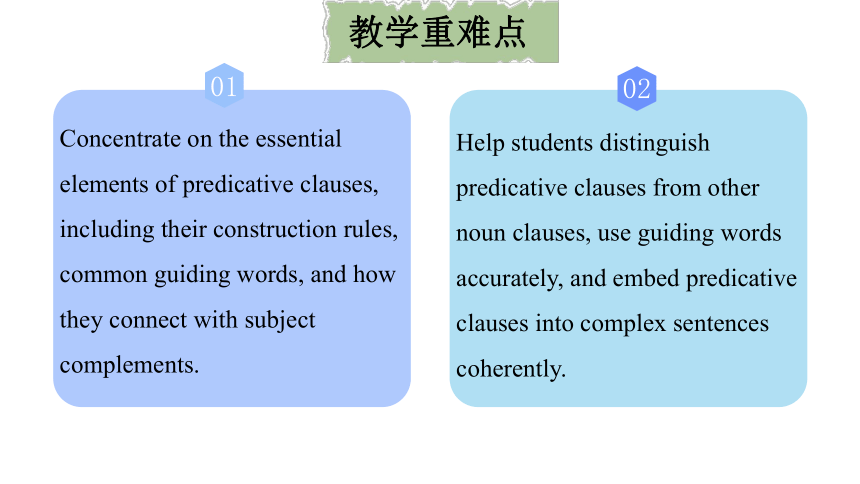
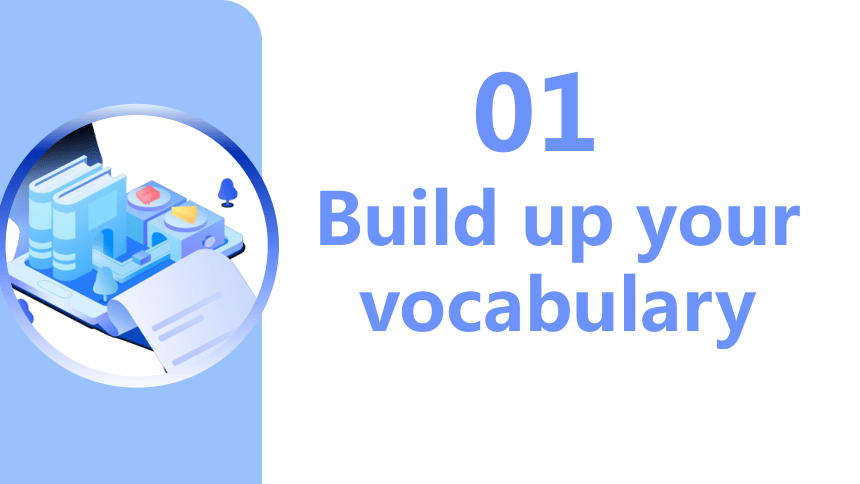
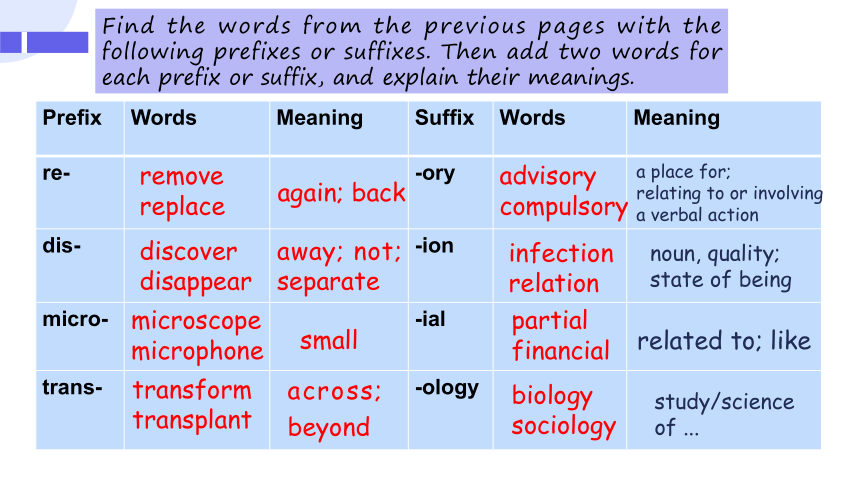

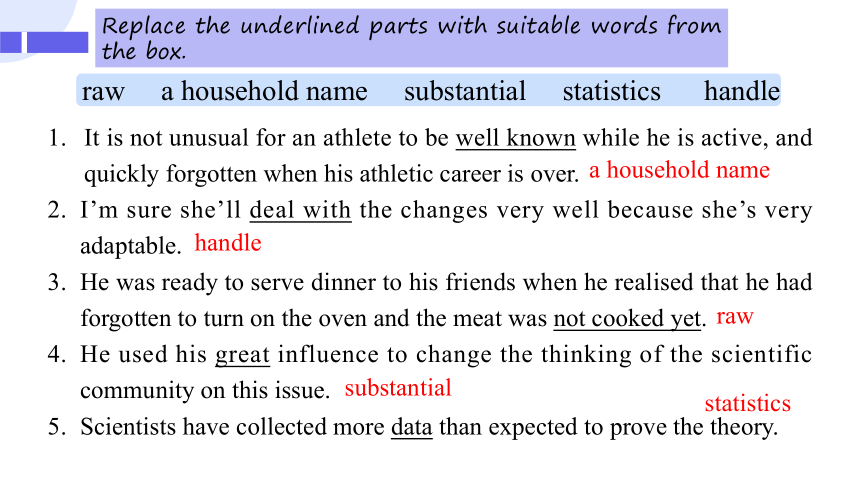
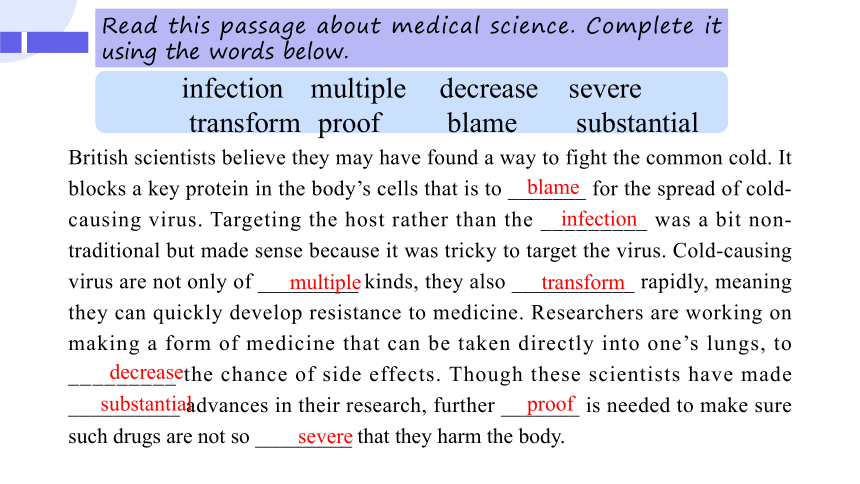
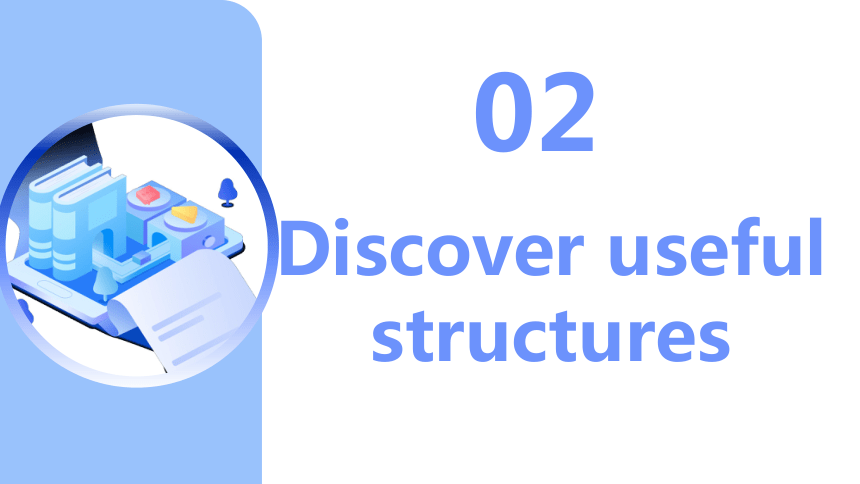
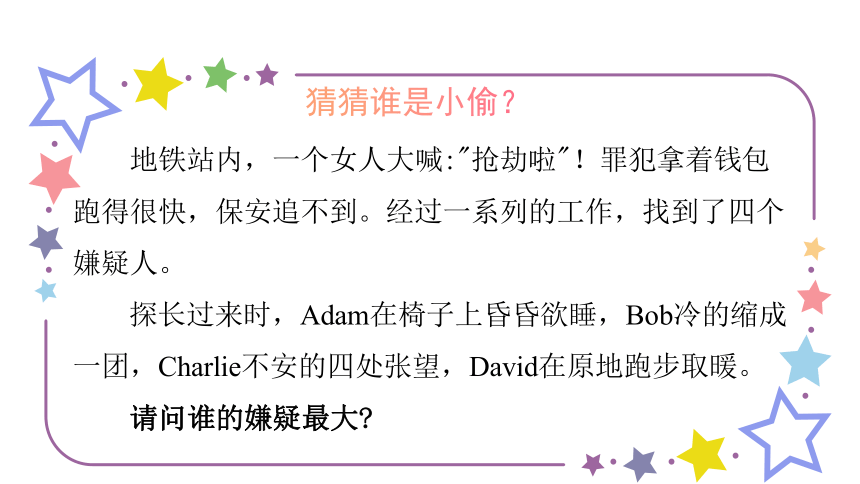

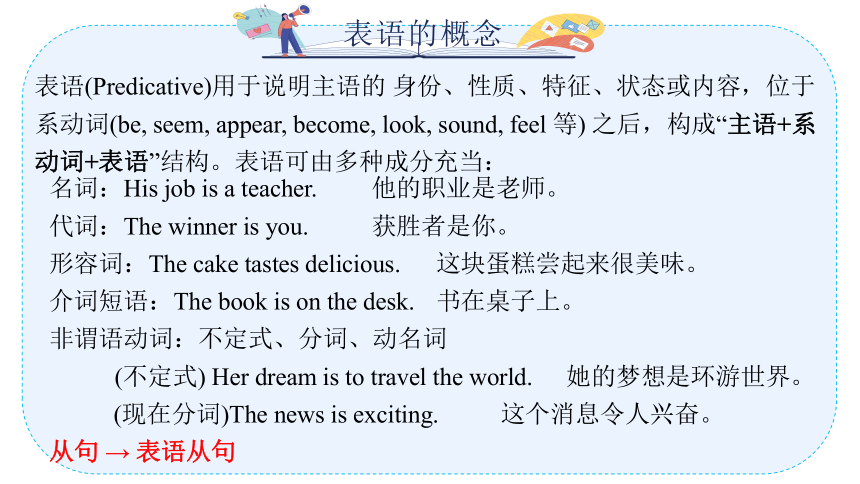
文档简介
(共32张PPT)
Unit 1
Science and
Scientists
Learning About Language
教学目标
Students will master the key grammar structures in Unit 1, accurately understanding their forms, rules, and functions.
1
Students will apply these grammar structures correctly in various contexts, improving their language proficiency.
2
教学重难点
01
02
Concentrate on the essential elements of predicative clauses, including their construction rules, common guiding words, and how they connect with subject complements.
Help students distinguish predicative clauses from other noun clauses, use guiding words accurately, and embed predicative clauses into complex sentences coherently.
01
Build up your vocabulary
Find the words from the previous pages with the following prefixes or suffixes. Then add two words for each prefix or suffix, and explain their meanings.
Prefix Words Meaning Suffix Words Meaning
re- -ory
dis- -ion
micro- -ial
trans- -ology
remove
replace
discover
disappear
microscope
microphone
transform
transplant
again; back
away; not; separate
across; beyond
small
advisory
compulsory
infection
relation
partial
financial
biology
sociology
a place for;
relating to or involving a verbal action
noun, quality;
state of being
related to; like
study/science of ...
Make phrases by combining the words in the left box with those on the right. Then complete the sentences using these phrases.
Many scientists _____________ the view that it is human activity that has caused global warming.
He was to ___________ the accident because he drove on the wrong side of the road.
The man _____________ being behind the robbery was seen crossing the street.
Since heart disease is often ___________ our lifestyle choices, we need to make healthy living an important part of our lives.
to of for
subscribe suspect blame link
subscribe to
blame for
suspected of
linked to
Replace the underlined parts with suitable words from the box.
It is not unusual for an athlete to be well known while he is active, and quickly forgotten when his athletic career is over.
I’m sure she’ll deal with the changes very well because she’s very adaptable.
He was ready to serve dinner to his friends when he realised that he had forgotten to turn on the oven and the meat was not cooked yet.
He used his great influence to change the thinking of the scientific community on this issue.
Scientists have collected more data than expected to prove the theory.
raw a household name substantial statistics handle
raw
substantial
statistics
a household name
handle
Read this passage about medical plete it using the words below.
British scientists believe they may have found a way to fight the common cold. It blocks a key protein in the body’s cells that is to _______ for the spread of cold-causing virus. Targeting the host rather than the _________ was a bit non-traditional but made sense because it was tricky to target the virus. Cold-causing virus are not only of _________ kinds, they also ___________ rapidly, meaning they can quickly develop resistance to medicine. Researchers are working on making a form of medicine that can be taken directly into one’s lungs, to _________ the chance of side effects. Though these scientists have made __________ advances in their research, further _______ is needed to make sure such drugs are not so _________ that they harm the body.
infection multiple decrease severe transform proof blame substantial
infection
multiple
transform
blame
decrease
substantial
proof
severe
02
Discover useful structures
猜猜谁是小偷?
地铁站内,一个女人大喊:"抢劫啦"!罪犯拿着钱包跑得很快,保安追不到。经过一系列的工作,找到了四个嫌疑人。
探长过来时,Adam在椅子上昏昏欲睡,Bob冷的缩成一团,Charlie不安的四处张望,David在原地跑步取暖。
请问谁的嫌疑最大
猜猜谁是小偷?
The greatest suspicion is David.
This is my guess.
如何合并为一句话
My guess is that the greatest suspicion is David.
表语从句
表语(Predicative)用于说明主语的 身份、性质、特征、状态或内容,位于 系动词(be, seem, appear, become, look, sound, feel 等) 之后,构成“主语+系动词+表语”结构。表语可由多种成分充当:
名词:His job is a teacher. 他的职业是老师。
代词:The winner is you. 获胜者是你。
形容词:The cake tastes delicious. 这块蛋糕尝起来很美味。
介词短语:The book is on the desk. 书在桌子上。
非谓语动词:不定式、分词、动名词
(不定式) Her dream is to travel the world. 她的梦想是环游世界。
(现在分词)The news is exciting. 这个消息令人兴奋。
从句 → 表语从句
表语的概念
系动词分类
表语从句(Predicative Clause)是指在系动词(be, seem, appear, look, sound, become 等) 之后,用来说明主语的身份、性质或状态的从句。它通常位于主句的谓语动词之后,充当表语(即主语补足语)。表语从句必须用陈述句语序。
结构:主语 + 系动词 + 引导词 + 从句
The truth was that the man had disappeared.
主语
系动词
引导词
从句
定义与结构
引导词
引导词 连词 在从句中不作成分 that, whether, as if, as though, because …
连接代词 在从句中作主语、宾语、表语、定语 what, who, whom, whose, which, whatever, whoever, whichever …
连接副词 在从句中作状语 when, where, how, why …
使用要点
1. 表语从句一定要用陈述语序,即使原句是疑问句。
错误:The problem is where can we find water.
(疑问语序:where + 情态动词 can + 主语 we)
正确:The problem is where we can find water.
(陈述语序:where + 主语 we + 情态动词 can + 谓语 find)
错误:This is who did the job.
(疑问语序:who 直接作主语时易混淆,但仍需按陈述语序结构)
正确:This is who the job was done by.
(陈述语序:who 作宾语,调整为: 主语 the job + 谓语 was done + 介词 by
表语从句有要求,陈述语序要记住;引导词后跟主语,谓语动词别错位。
使用要点
2. that 引导表语从句时,仅作为连接词存在,其作用是连接主句的主语和从句,不充当从句中的任何成分(如主语、宾语、表语等),无实际语义,在口语或非正式语境中有时可省略,但在正式写作中建议保留以避免歧义。
① that 可省略的情况(口语 / 非正式)
The truth is (that) he didn’t finish the work on time.
② that 不可省略的情况(正式语境)
The problem is that we lack the necessary resources.
③ 多个 that 引导的表语从句(并列结构中不可省略)
His argument was that the project was feasible and that we should start immediately.
使用要点
3. whether 引导表语从句时,仅作为连接词,表示 “是否、到底” 的含义,不充当从句的任何成分(如主语、宾语等),且不能用 if 替换。其作用是连接主句的主语和从句,使从句成为主句主语的具体内容或疑问焦点。
① 基本用法(whether 表示 “是否”)
The question is whether he will accept the invitation.
② 与 or not 连用加强语气
The problem is whether we can finish the task on time or not.
③ 注意:if 不能引导表语从句,因此不可与weather替换
The doubt is if the plan is practical.
The doubt is whether the plan is practical.
使用要点
4. 连接代词引导表语从句时,兼具连接主句与从句和在从句中充当句子成分(主语、宾语、表语、定语)的双重功能,且本身有明确语义(如 “谁”“什么”“哪一个” 等)。
连接代词 从句中成分 语义 例句
who 主语 “谁” The winner is who solved the problem.
whom 宾语 “谁(宾格)” I’ll marry whom I love.
whose 定语 “谁的” The question is whose car this is.
what 主语 / 宾语 / 表语 “什么”“所…… 的事物” What she said is true.
which 主语 / 宾语 / 定语 “哪一个 / 些” Choose which you like.
whoever 主语 / 宾语 “无论谁”“任何人” Whoever arrives first wins.
使用要点
5. 连接副词引导表语从句时,既连接主句与从句,又在从句中充当地点、时间、原因、方式等状语,本身具有明确语义(如 “哪里”“何时”“为什么”“如何”)。
连接副词 从句中成分 语义 例句
where 地点状语 “在哪里” This is where I grew up.
when 时间状语 “何时” The problem is when they will arrive.
why 原因状语 “为什么” The answer is why she was late.
how 方式状语 “如何”“怎样” The issue is how to solve the problem.
使用要点
6. That is because... 和 That is why... 是表语从句中常见的固定结构,二者均通过 that 连接主句与从句,但语义和逻辑关系截然不同:
That is because... 强调 原因(主句说明结果,从句解释原因)。
That is why... 强调 结果(主句说明原因,从句推导结果)。
①That is because + 原因→逻辑:结果(主句) + 因为……(从句解释原因)
He didn’t attend the meeting. That is because he was ill.
他没参加会议, 那是因为他生病了。
②That is why + 结果→逻辑:原因(主句) + 因此……(从句说明结果)
He was ill. That is why he didn’t attend the meeting.
他生病了, 因此没参加会议。
使用要点
7. 当表语从句的主语是表示建议、劝告、命令、要求等含义的名词(如 advice, suggestion, order, proposal 等)时,从句需用虚拟语气,谓语动词结构为:should + 动词原形(should 可省略)。
此规则的本质是:将主语名词的主观要求(建议 / 命令等)通过虚拟语气在表语从句中体现。
主语名词类型 常见名词 虚拟语气结构 是否可省略 should
建议类 advice, suggestion, tip should + 动词原形 是(口语 / 正式均可)
命令类 order, command, instruction should + 动词原形 是(正式场合常保留)
提议 / 要求类 proposal, requirement, plan should + 动词原形 是
03
Exercise
Answer the following questions using the information from the reading passage as well as the predicative clauses.
Example
What was it that John Snow showed to the world
→What John Snow showed to the world was how cholera could be overcome.
1. What was Snow’s discovery in two particular streets in London
Snow’s discovery in two particular streets in London was that _____________
_______________________________________________________________.
the cholera
outbreak was so severe that more than 500 people died in ten days
2. What was Snow determined to find out during the 1854 outbreak of cholera in
London
What Snow was determined to find out was why ________________________
_________________________________.
the outbreak of cholera had
caused over 500 deaths within ten days
Answer the following questions using the information from the reading passage as well as the predicative clauses.
3. What were the exact places Snow marked on the map
The exact places Snow marked on the map were where _____________________________.
all those who died had lived
4. What was the finding that Snow announced
Snow’s finding was that _________________________________.
the pump water carried cholera germs
David is talking to Maria about their scientific research project. First complete David’s lines (A-E), using the words in the box. Then put David’s lines in the correct order and practise the conversation.
as if that what who when how why whose which whether
A Absolutely. You may not believe it, but that was ________ happened at the initial stage of our group’s research on developing a vaccine for malaria.
B Yes, it is. And it seemed _____ all the theories were useful, but the fact was ______ we couldn’t persuade one another that one theory was better than another.
C Exactly. The problem was not about ___________ all our theories were equally good, but in deciding __________________ theory to depend upon.
D We realised that what we cared about was not __________ aspect we needed to develop a theory in, but rather ______ we can reduce the cost of a vaccine without reducing its effect!
E You’re right. At last, we became focused on the key issue, which was ______ we had to carry out the research in the first place.
what
as if
that
which/what
which/ what/ whose
how
why
whether
Maria: This mix of theory and data is one of the key characteristics of what we call science.
David:_________________________________________________________ ________________________________________________________
Maria: With your theoretical framework
David:_________________________________________________________
_________________________________________________________
Maria: Deciding on a theory is definitely of critical importance.
David:_________________________________________________________ __________________________________________________________
A Absolutely. You may not believe it, but that was what happened at the initial stage of our group’s research on developing a vaccine for malaria.
C Exactly. The problem was not about whether all our theories were equally good, but in deciding which/ what/ whose theory to depend upon.
B Yes, it is. And it seemed as if all the theories were useful, but the fact was that we couldn’t persuade one another that one theory was better than another.
Maria: This was when you should have calmed down and got down to doing some solid work.
David: ______________________________________________________
______________________________________________________
Maria: So what happened in the end
David:_________________________________________________________
_________________________________________________________
_________________________________________________________
D We realised that what we cared about was not which/what aspect we needed to develop a theory in, but rather how we can reduce the cost of a vaccine without reducing its effect!
E You’re right. At last, we became focused on the key issue, which was why we had to carry out the research in the first place.
My suggestion is that we ___________ (start) the project at once.
The question is _________ the film is worth watching.
The reason is _________ he was late for the exam.
The fact is _________ he has already made up his mind.
Her request is that everyone _________ (be) present at the meeting.
This is _________ I want to tell you.
The question is _________ of you is responsible for this accident.
The truth is ______ he didn’t attend the meeting.
(should) start
that
what
that
whether
(should) be
that
which
04
Homework
Homework
1. Summarise what we have learnt in this lesson;
2. Prepare for the next lesson
汇报时间:20XX年XX月XX日
See you next class!
Unit 1
Science and
Scientists
Learning About Language
教学目标
Students will master the key grammar structures in Unit 1, accurately understanding their forms, rules, and functions.
1
Students will apply these grammar structures correctly in various contexts, improving their language proficiency.
2
教学重难点
01
02
Concentrate on the essential elements of predicative clauses, including their construction rules, common guiding words, and how they connect with subject complements.
Help students distinguish predicative clauses from other noun clauses, use guiding words accurately, and embed predicative clauses into complex sentences coherently.
01
Build up your vocabulary
Find the words from the previous pages with the following prefixes or suffixes. Then add two words for each prefix or suffix, and explain their meanings.
Prefix Words Meaning Suffix Words Meaning
re- -ory
dis- -ion
micro- -ial
trans- -ology
remove
replace
discover
disappear
microscope
microphone
transform
transplant
again; back
away; not; separate
across; beyond
small
advisory
compulsory
infection
relation
partial
financial
biology
sociology
a place for;
relating to or involving a verbal action
noun, quality;
state of being
related to; like
study/science of ...
Make phrases by combining the words in the left box with those on the right. Then complete the sentences using these phrases.
Many scientists _____________ the view that it is human activity that has caused global warming.
He was to ___________ the accident because he drove on the wrong side of the road.
The man _____________ being behind the robbery was seen crossing the street.
Since heart disease is often ___________ our lifestyle choices, we need to make healthy living an important part of our lives.
to of for
subscribe suspect blame link
subscribe to
blame for
suspected of
linked to
Replace the underlined parts with suitable words from the box.
It is not unusual for an athlete to be well known while he is active, and quickly forgotten when his athletic career is over.
I’m sure she’ll deal with the changes very well because she’s very adaptable.
He was ready to serve dinner to his friends when he realised that he had forgotten to turn on the oven and the meat was not cooked yet.
He used his great influence to change the thinking of the scientific community on this issue.
Scientists have collected more data than expected to prove the theory.
raw a household name substantial statistics handle
raw
substantial
statistics
a household name
handle
Read this passage about medical plete it using the words below.
British scientists believe they may have found a way to fight the common cold. It blocks a key protein in the body’s cells that is to _______ for the spread of cold-causing virus. Targeting the host rather than the _________ was a bit non-traditional but made sense because it was tricky to target the virus. Cold-causing virus are not only of _________ kinds, they also ___________ rapidly, meaning they can quickly develop resistance to medicine. Researchers are working on making a form of medicine that can be taken directly into one’s lungs, to _________ the chance of side effects. Though these scientists have made __________ advances in their research, further _______ is needed to make sure such drugs are not so _________ that they harm the body.
infection multiple decrease severe transform proof blame substantial
infection
multiple
transform
blame
decrease
substantial
proof
severe
02
Discover useful structures
猜猜谁是小偷?
地铁站内,一个女人大喊:"抢劫啦"!罪犯拿着钱包跑得很快,保安追不到。经过一系列的工作,找到了四个嫌疑人。
探长过来时,Adam在椅子上昏昏欲睡,Bob冷的缩成一团,Charlie不安的四处张望,David在原地跑步取暖。
请问谁的嫌疑最大
猜猜谁是小偷?
The greatest suspicion is David.
This is my guess.
如何合并为一句话
My guess is that the greatest suspicion is David.
表语从句
表语(Predicative)用于说明主语的 身份、性质、特征、状态或内容,位于 系动词(be, seem, appear, become, look, sound, feel 等) 之后,构成“主语+系动词+表语”结构。表语可由多种成分充当:
名词:His job is a teacher. 他的职业是老师。
代词:The winner is you. 获胜者是你。
形容词:The cake tastes delicious. 这块蛋糕尝起来很美味。
介词短语:The book is on the desk. 书在桌子上。
非谓语动词:不定式、分词、动名词
(不定式) Her dream is to travel the world. 她的梦想是环游世界。
(现在分词)The news is exciting. 这个消息令人兴奋。
从句 → 表语从句
表语的概念
系动词分类
表语从句(Predicative Clause)是指在系动词(be, seem, appear, look, sound, become 等) 之后,用来说明主语的身份、性质或状态的从句。它通常位于主句的谓语动词之后,充当表语(即主语补足语)。表语从句必须用陈述句语序。
结构:主语 + 系动词 + 引导词 + 从句
The truth was that the man had disappeared.
主语
系动词
引导词
从句
定义与结构
引导词
引导词 连词 在从句中不作成分 that, whether, as if, as though, because …
连接代词 在从句中作主语、宾语、表语、定语 what, who, whom, whose, which, whatever, whoever, whichever …
连接副词 在从句中作状语 when, where, how, why …
使用要点
1. 表语从句一定要用陈述语序,即使原句是疑问句。
错误:The problem is where can we find water.
(疑问语序:where + 情态动词 can + 主语 we)
正确:The problem is where we can find water.
(陈述语序:where + 主语 we + 情态动词 can + 谓语 find)
错误:This is who did the job.
(疑问语序:who 直接作主语时易混淆,但仍需按陈述语序结构)
正确:This is who the job was done by.
(陈述语序:who 作宾语,调整为: 主语 the job + 谓语 was done + 介词 by
表语从句有要求,陈述语序要记住;引导词后跟主语,谓语动词别错位。
使用要点
2. that 引导表语从句时,仅作为连接词存在,其作用是连接主句的主语和从句,不充当从句中的任何成分(如主语、宾语、表语等),无实际语义,在口语或非正式语境中有时可省略,但在正式写作中建议保留以避免歧义。
① that 可省略的情况(口语 / 非正式)
The truth is (that) he didn’t finish the work on time.
② that 不可省略的情况(正式语境)
The problem is that we lack the necessary resources.
③ 多个 that 引导的表语从句(并列结构中不可省略)
His argument was that the project was feasible and that we should start immediately.
使用要点
3. whether 引导表语从句时,仅作为连接词,表示 “是否、到底” 的含义,不充当从句的任何成分(如主语、宾语等),且不能用 if 替换。其作用是连接主句的主语和从句,使从句成为主句主语的具体内容或疑问焦点。
① 基本用法(whether 表示 “是否”)
The question is whether he will accept the invitation.
② 与 or not 连用加强语气
The problem is whether we can finish the task on time or not.
③ 注意:if 不能引导表语从句,因此不可与weather替换
The doubt is if the plan is practical.
The doubt is whether the plan is practical.
使用要点
4. 连接代词引导表语从句时,兼具连接主句与从句和在从句中充当句子成分(主语、宾语、表语、定语)的双重功能,且本身有明确语义(如 “谁”“什么”“哪一个” 等)。
连接代词 从句中成分 语义 例句
who 主语 “谁” The winner is who solved the problem.
whom 宾语 “谁(宾格)” I’ll marry whom I love.
whose 定语 “谁的” The question is whose car this is.
what 主语 / 宾语 / 表语 “什么”“所…… 的事物” What she said is true.
which 主语 / 宾语 / 定语 “哪一个 / 些” Choose which you like.
whoever 主语 / 宾语 “无论谁”“任何人” Whoever arrives first wins.
使用要点
5. 连接副词引导表语从句时,既连接主句与从句,又在从句中充当地点、时间、原因、方式等状语,本身具有明确语义(如 “哪里”“何时”“为什么”“如何”)。
连接副词 从句中成分 语义 例句
where 地点状语 “在哪里” This is where I grew up.
when 时间状语 “何时” The problem is when they will arrive.
why 原因状语 “为什么” The answer is why she was late.
how 方式状语 “如何”“怎样” The issue is how to solve the problem.
使用要点
6. That is because... 和 That is why... 是表语从句中常见的固定结构,二者均通过 that 连接主句与从句,但语义和逻辑关系截然不同:
That is because... 强调 原因(主句说明结果,从句解释原因)。
That is why... 强调 结果(主句说明原因,从句推导结果)。
①That is because + 原因→逻辑:结果(主句) + 因为……(从句解释原因)
He didn’t attend the meeting. That is because he was ill.
他没参加会议, 那是因为他生病了。
②That is why + 结果→逻辑:原因(主句) + 因此……(从句说明结果)
He was ill. That is why he didn’t attend the meeting.
他生病了, 因此没参加会议。
使用要点
7. 当表语从句的主语是表示建议、劝告、命令、要求等含义的名词(如 advice, suggestion, order, proposal 等)时,从句需用虚拟语气,谓语动词结构为:should + 动词原形(should 可省略)。
此规则的本质是:将主语名词的主观要求(建议 / 命令等)通过虚拟语气在表语从句中体现。
主语名词类型 常见名词 虚拟语气结构 是否可省略 should
建议类 advice, suggestion, tip should + 动词原形 是(口语 / 正式均可)
命令类 order, command, instruction should + 动词原形 是(正式场合常保留)
提议 / 要求类 proposal, requirement, plan should + 动词原形 是
03
Exercise
Answer the following questions using the information from the reading passage as well as the predicative clauses.
Example
What was it that John Snow showed to the world
→What John Snow showed to the world was how cholera could be overcome.
1. What was Snow’s discovery in two particular streets in London
Snow’s discovery in two particular streets in London was that _____________
_______________________________________________________________.
the cholera
outbreak was so severe that more than 500 people died in ten days
2. What was Snow determined to find out during the 1854 outbreak of cholera in
London
What Snow was determined to find out was why ________________________
_________________________________.
the outbreak of cholera had
caused over 500 deaths within ten days
Answer the following questions using the information from the reading passage as well as the predicative clauses.
3. What were the exact places Snow marked on the map
The exact places Snow marked on the map were where _____________________________.
all those who died had lived
4. What was the finding that Snow announced
Snow’s finding was that _________________________________.
the pump water carried cholera germs
David is talking to Maria about their scientific research project. First complete David’s lines (A-E), using the words in the box. Then put David’s lines in the correct order and practise the conversation.
as if that what who when how why whose which whether
A Absolutely. You may not believe it, but that was ________ happened at the initial stage of our group’s research on developing a vaccine for malaria.
B Yes, it is. And it seemed _____ all the theories were useful, but the fact was ______ we couldn’t persuade one another that one theory was better than another.
C Exactly. The problem was not about ___________ all our theories were equally good, but in deciding __________________ theory to depend upon.
D We realised that what we cared about was not __________ aspect we needed to develop a theory in, but rather ______ we can reduce the cost of a vaccine without reducing its effect!
E You’re right. At last, we became focused on the key issue, which was ______ we had to carry out the research in the first place.
what
as if
that
which/what
which/ what/ whose
how
why
whether
Maria: This mix of theory and data is one of the key characteristics of what we call science.
David:_________________________________________________________ ________________________________________________________
Maria: With your theoretical framework
David:_________________________________________________________
_________________________________________________________
Maria: Deciding on a theory is definitely of critical importance.
David:_________________________________________________________ __________________________________________________________
A Absolutely. You may not believe it, but that was what happened at the initial stage of our group’s research on developing a vaccine for malaria.
C Exactly. The problem was not about whether all our theories were equally good, but in deciding which/ what/ whose theory to depend upon.
B Yes, it is. And it seemed as if all the theories were useful, but the fact was that we couldn’t persuade one another that one theory was better than another.
Maria: This was when you should have calmed down and got down to doing some solid work.
David: ______________________________________________________
______________________________________________________
Maria: So what happened in the end
David:_________________________________________________________
_________________________________________________________
_________________________________________________________
D We realised that what we cared about was not which/what aspect we needed to develop a theory in, but rather how we can reduce the cost of a vaccine without reducing its effect!
E You’re right. At last, we became focused on the key issue, which was why we had to carry out the research in the first place.
My suggestion is that we ___________ (start) the project at once.
The question is _________ the film is worth watching.
The reason is _________ he was late for the exam.
The fact is _________ he has already made up his mind.
Her request is that everyone _________ (be) present at the meeting.
This is _________ I want to tell you.
The question is _________ of you is responsible for this accident.
The truth is ______ he didn’t attend the meeting.
(should) start
that
what
that
whether
(should) be
that
which
04
Homework
Homework
1. Summarise what we have learnt in this lesson;
2. Prepare for the next lesson
汇报时间:20XX年XX月XX日
See you next class!
